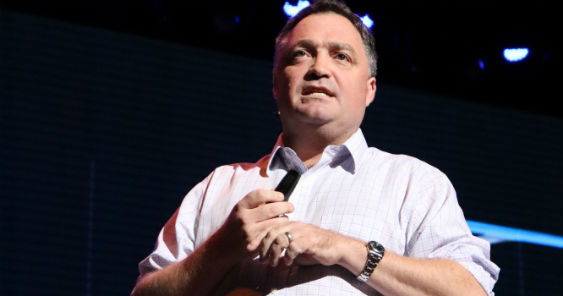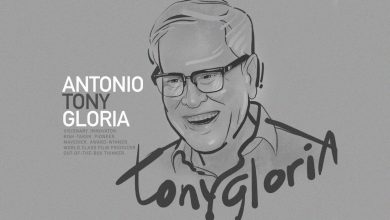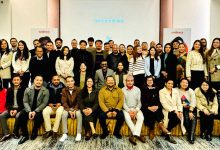How BBDO changed the game for road safety education in Australia
By Nicai de Guzman
Andy Wilson, Head of Strategy of BBDO Asia, introduced Graham – the only person who was designed and built to survive road accidents. Graham looked grotesque, almost like an alien, but there was a reason he looked as such and this was what Wilson shared.
“We changed the rules of road safety communication and created an experience that combines data and humanity and storytelling in a very interesting way,” he said.
For Wilson, road safety statistics seemed so impersonal and confusing to their target and this is why data must be humanized.
“Data must serve humanity… There needs to be a parallel revolution about humanity – to tap into what makes us into how we are to understand what we are. I think there needs to be an explosion in storytelling, how we treat philosophy, art,” Wilson said.
“It’s about how we interpret our data with empathy, affection and creativity,” he added.
The data
The project came from Victoria, a city with 5 to 6 million people. The government was fixated on reducing road deaths to zero. So far, they’ve been effective with their road safety education, however the numbers plateaued over the years. This meant they needed a new campaign to get their message across. Wilson shared how their team thought of all those lives lost and the lives potentially lost.
“We need to lean in to that data, project ourselves into that data and think about the people and the lives behind that data. We really need to think about the people and the humanity behind the data,” Wilson said.
Wilson showed an analysis of a graph that showed the likelihood of someone’s survival when involved in a road accident. If you’re a pedestrian and get hit above 30 kmh, the human body is not able to survive the impact or force of a car hitting you at the speed. If you’re inside the car, driving at 60 kmh and has a side on collision, you’re not likely survive.
“We could just put out that chart out on a leaflet to every driver in the Australia, UK, the Philippines or wherever because data rules the world, right? The annoying inconvenient fact about the world is humans are not robots we need this data to be explained in a form of storytelling so we can understand it, memorize it, maybe act upon it,” he said.
Wilson and his team then had to talk to people to understand why the usual road safety ads don’t just cut it anymore. An insight they gathered is that people have an invincibility barrier, which simply meant drivers and pedestrians thought they were happy and healthy and nothing bad could happen to them.
Another is the attribution barrier which meant that people thought they were better drivers than most people. Trauma fatigue is another reason – seeing too much of the usual shocking ads that drove people to stop connecting and internalizing the stories.
“These are just three biases and we talked about how we need to design for human need. If we have to design for human behavior, we have to bear in mind all these biases,” he said.
The design
They tried to address the invincibility bias by making it apparent that it doesn’t matter if you’re a man or a woman, young or old – in any given car crash, anybody is vulnerable, Wilson said. They wanted to take the conversation away from driving error and into something more basic like the human body. Unfortunately, the human body has not evolved enough to withstand the impact of car crashes.
“We came up with this idea of what it would be like to demonstrate our vulnerability by coming up with this perverse human form that is capable of doing it,” he said.
A collaboration then ensued between scientists and artists – people who understood road safety and data and those who knew about storytelling and form. After months of collaboration, Graham came alive. He is an interactive, life-like sculpture that shows how the human body would need to change to survive impact forces of 30km/hr. Basically, he is a data visualization in a very unique form.
He was created by Victorian artist Patricia Piccinini in collaboration with trauma surgeon Dr. Christian Kenfield and crash investigator Dr. David Logan. “We essentially gave him this look that was grotesque but at the same time a kind of humanity and a kind of sadness that drew people in,” he said.
An oddity, Graham started to create conversation. They created an experience. It was launched in technical and traditional media. Graham was available to be seen in museums where people could learn why certain body parts were altered and why this mutation was essential to survival. Aside from the usual talks, visitors could “get under his skin” via Google Tango’s augmented reality technology.
The results
“It started a global conversation. Everyone was intrigued. It started a conversation how the human body was vulnerable to road accidents,” Wilson said.
Graham was featured by major Australian TV news programs and he was also covered by international media such as CNN, BBC, The Guardian, and even BuzzFeed.
He earned over 2,500 individual broadcast stories with 98.6% positive local coverage when the benchmark was 67% for road safety campaigns. Videos about him garnered a total of 31 million views with over 80,000 shares. He was reported in over 12 languages and 186 countries ‘met’ him online.
The campaign amounted to earned media value of $29m without the company spending a dollar on traditional media coverage. More important than the media coverage was the result relating to how people’s minds were opened up because of this campaign.
Wilson reported that Graham’s website amassed 1.9 million unique visits, with an average of 2:45 minutes spent on site. These visitors also learned about more than five body parts during their stay.
For those who opted to visit the museum, there was over 220,000 of them who met Graham in real life. They also spent an average of 3:58 exploring and learning about Graham using Google Tango AR. More incredibly, 1 in 2 people remembered Graham three months after the launch and there was a 15.9% reduction in road accidents year to date by June 2017.
“What was quite interesting was how memorable it was. It was not just a traumatic video of a road accident. There was no gore, no blood. This was more of a long form of conversation,” he said.
“The mixture of humanity with data and the ability to tell something unique in a compelling and reflective way made it very, very different.”
Watch his full talk here:










